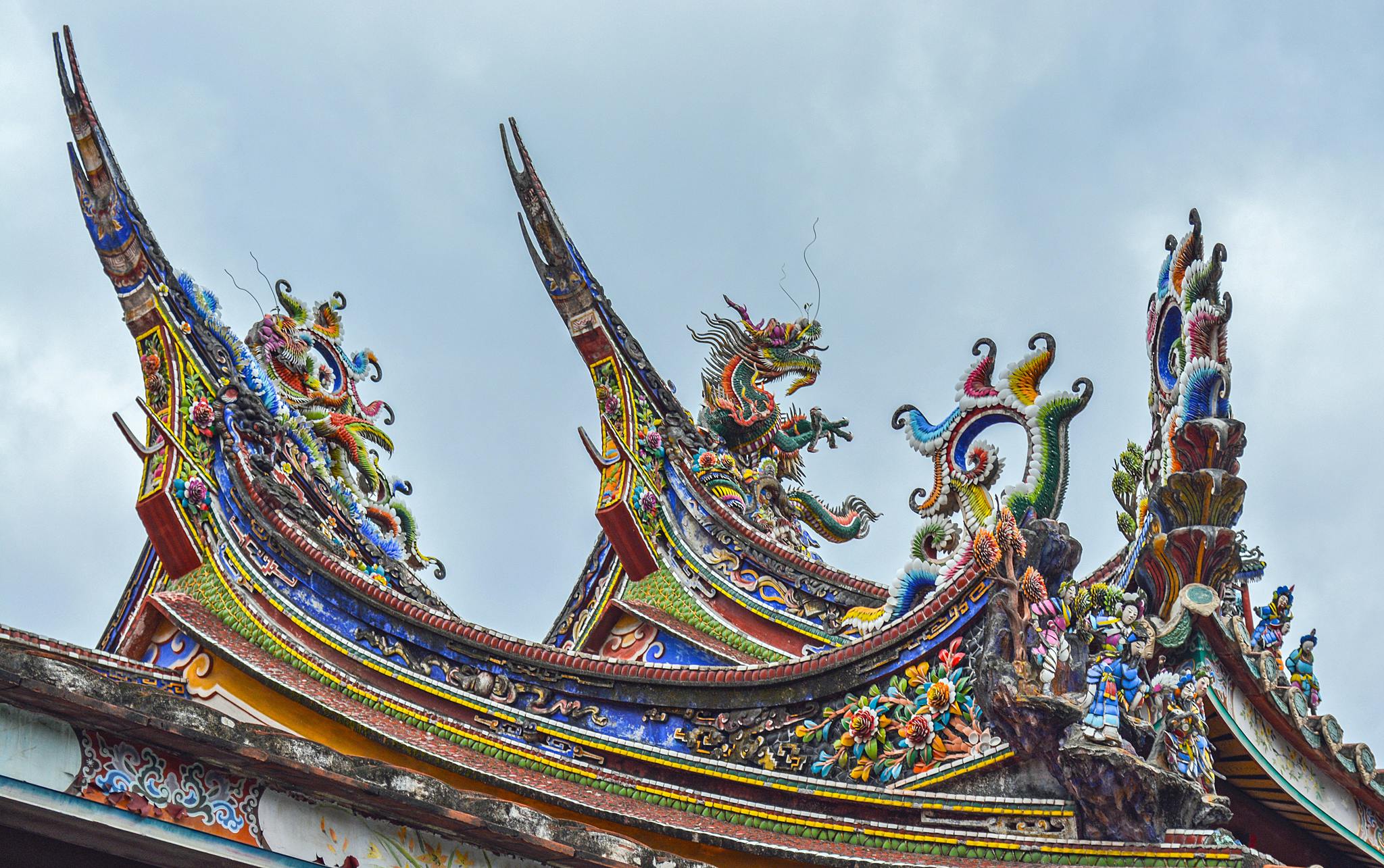Where to Find Some of Asia’s Most Soul-Stirring Religious Sites
Asia’s temples, mosques and shrines beguile tourists with their exotic beauty. This continent’s finest houses of worship are variously wrapped in gold, coated with murals, garnished by mosaics, splashed with colors, spiked by minarets, bedecked by lanterns, and adorned by pagodas.
Such detail ensures they dazzle in person and sparkle in images. From my decade living on and off in Asia as a writer and photographer, here are 10 of the most epic spiritual sanctuaries I encountered.
National Mosque
Kuala Lumpur, Malaysia
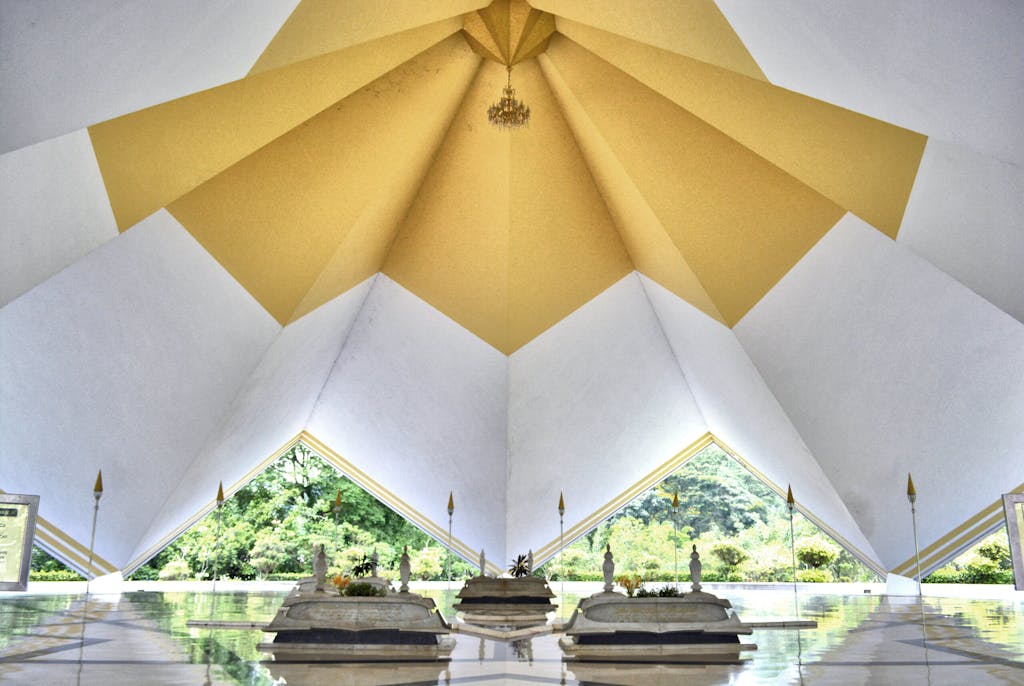
My wife resembles an ancient pilgrim. Her dark brown eyes gaze from beneath the hood of a purple gown that drapes her frame and brushes the gleaming marble floor of the National Mosque of Malaysia, also called the Masjid Negara. I’ve snapped several of my favorite photos of her here amid a forest of columns and array of Arabesque patterns.
This Muslim-majority nation has hundreds of splendid mosques., but none transcends this 1965 masterwork in the capital Kuala Lumpur, which can host up to 15,000 worshippers. It is a potent mix of design elements sourced from across the Islamic world. Observant visitors will see features borrowed from mosques in India, Iran, Turkey, Pakistan, Spain and Saudi Arabia.
Masjid Negara’s 240-foot-tall white minaret beckons visitors from a distance, literally and figuratively. Once tourists don the cloaks required for entry, they can admire the mosque’s umbrella-shaped roof, hypnotic latticework, grove of columns, and lemon-hued mausoleum.
Shimogamo Shrine
Kyoto, Japan
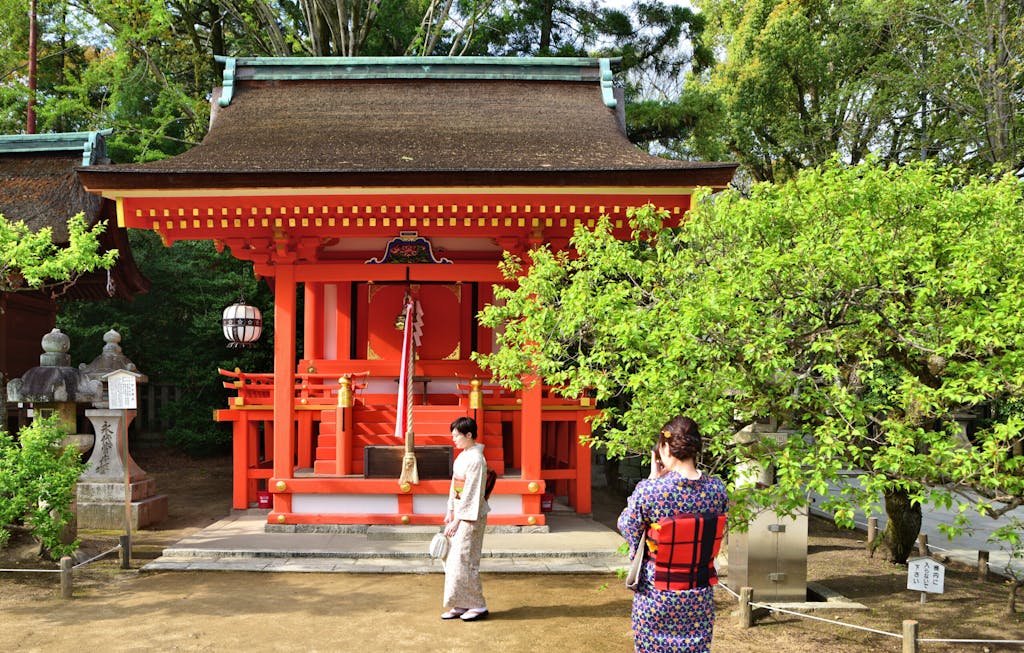
Tied around tree trunks throughout Japan are straw ropes which, while undeniably pretty, are not ornamental. Instead, their purpose is cosmic. This lesson was delivered to me by one of Japan’s foremost ecologists, Hiroyuki Watanabe, as we strolled the primeval forest that encircles 1,400-year-old Shimogamo Shrine in Kyoto.
A patient reservoir of knowledge, he taught me that for two millennia in Japan, trees have had equal status with humans. Some are even more exalted, believed to throb with spiritual energy, including several rope-adorned specimens we passed at Shimogamo.
This UNESCO World Heritage site also thrills tourists with its commanding gates, arched bridge and unique festivals, including horseback archery event in May called Yabusame Shinji.
Tanah Lot
Bali, Indonesia
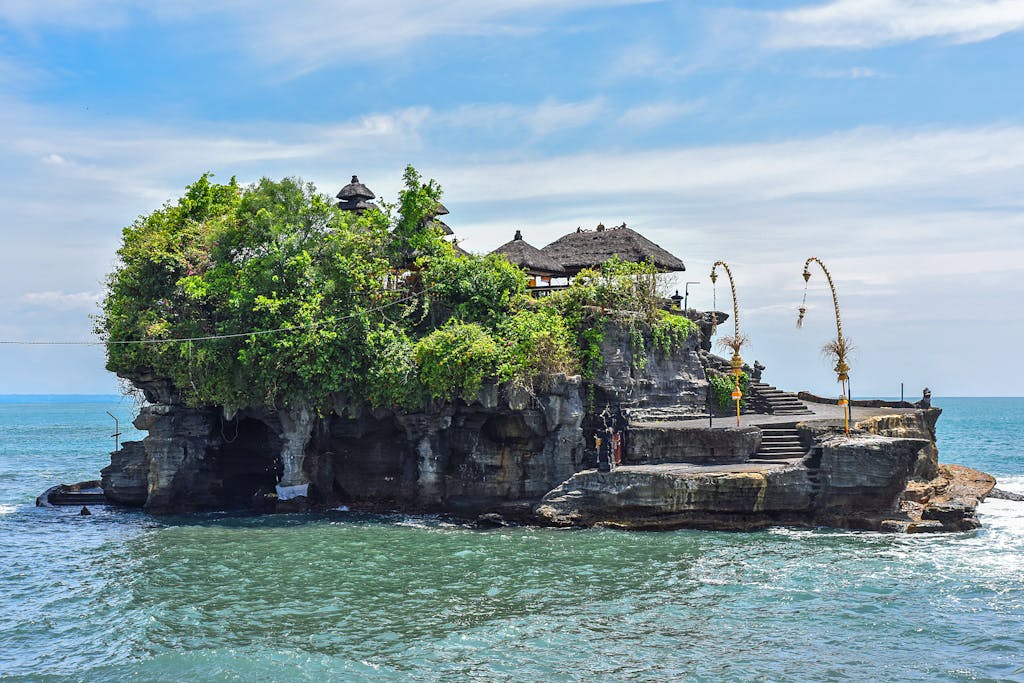
If I were to become religious, Tanah Lot would embody my ideal prayer perch. Marooned in ocean, elevated above crashing waves and oriented to a blue expanse of sky and water, it always calms me, even from afar. This unique Hindu temple, on Bali’s southwest coast, sits atop a petite tower of rock about 300 feet from the mainland.
Tanah Lot has drawn Indonesian worshippers for at least 500 years. They wait until low tide makes it accessible by way of an exposed ledge. In recent years, its magnetism has expanded beyond the spiritual to the commercial. Tanah Lot is the best known famous attraction on an island that attracts many tourists.
Although visitors cannot enter the temple, they can photograph its dramatic appearance from the clifftop restaurants that overlook it and read signs that explain how Tanah Lot venerates Bali’s gods of the sea.
Bao’an Temple
Taipei, Taiwan
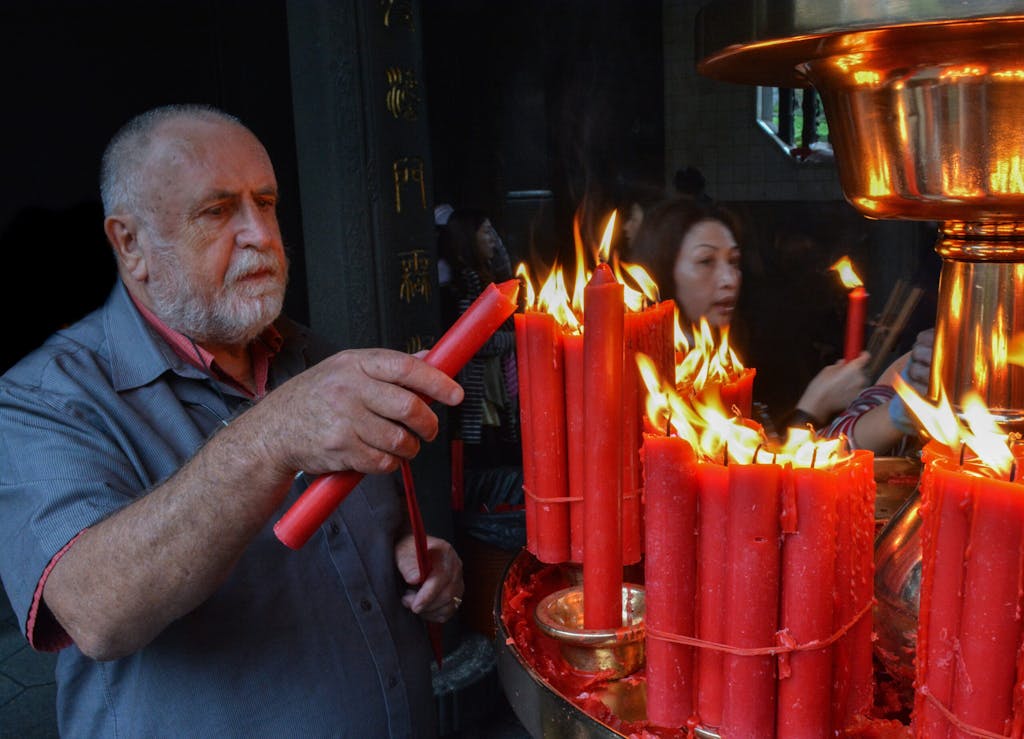
My late father tended to scowl or beam in photos. That may be why I cherish the rare contemplation and tranquility on his face as he lit a candle inside Bao’an Temple in Taipei. He was in his mid-60s, and he had recently endured a prolonged illness. As this flame flickered, he prayed for respite.
Like his son, my dad had no religion yet admired and found comfort in houses of worship, whether they were Islamic, Hindu, Christian, Buddhist or in this case, Chinese folk religion. His request for heavenly aid was appropriate, given Bao’an Temple (pictured at top of page) is dedicated to Emperor Daosheng (also spelled Daoguang), a deity renowned for medical acumen.
Daosheng is said to be protected by the stone lions and dragon pillars that embellish this temple in Taiwan’s capital. He appears in several of the stunning murals in this complex, which also includes colorful roofs, intricate stonework, paintings, pillars and statues.
Jami ul-Alfar Mosque
Colombo, Sri Lanka
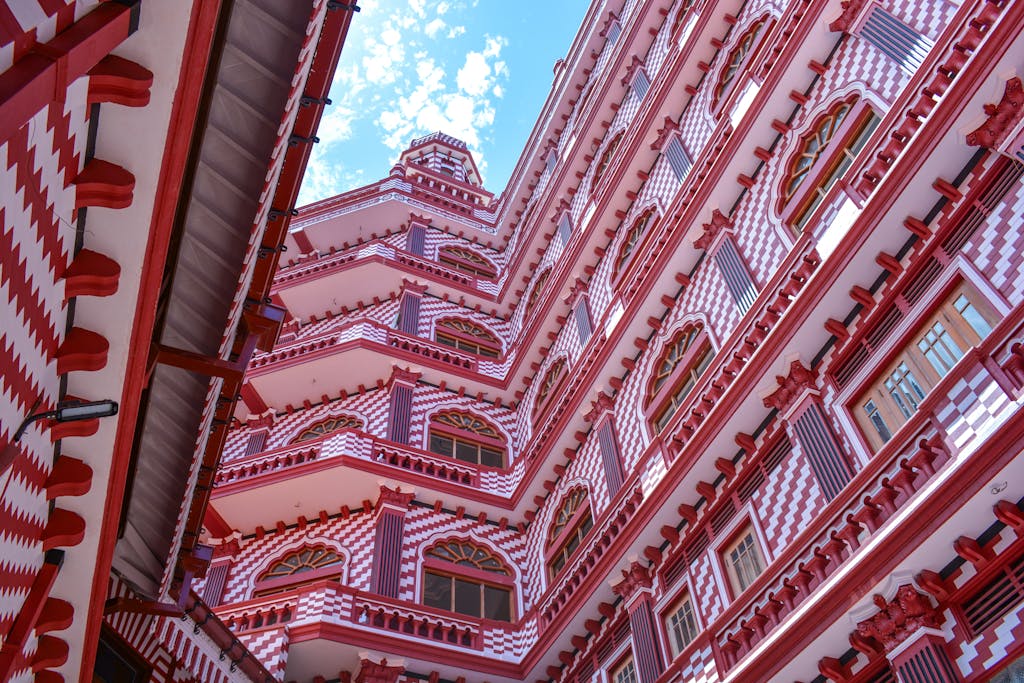
Jami ul-Alfar Mosque struck me like a double espresso. Weary from a red-eye flight, I trudged from my hotel into Colombo’s busy Pettah neighborhood, taking photos out of duty rather than inspiration. Then I spotted a building so distinctive, colorful and ostentatious that my imagination flared, my energy spiked, and I was incapable of taking a dull photo.
Jagged, red and white stripes cover its façade until it looks like a fantastical Disney version of a mosque. These Islamic houses of worship were already my favorite structures to photograph because of their geometric patterns, floral motifs, lofty minarets and shapely domes evident at Jami ul-Alfar.
All of this is turbocharged by bold color schemes. It remains one of the most important mosques in Sri Lanka, as well as a prime tourist attraction in the national capital.
Lama Temple
Beijing, China
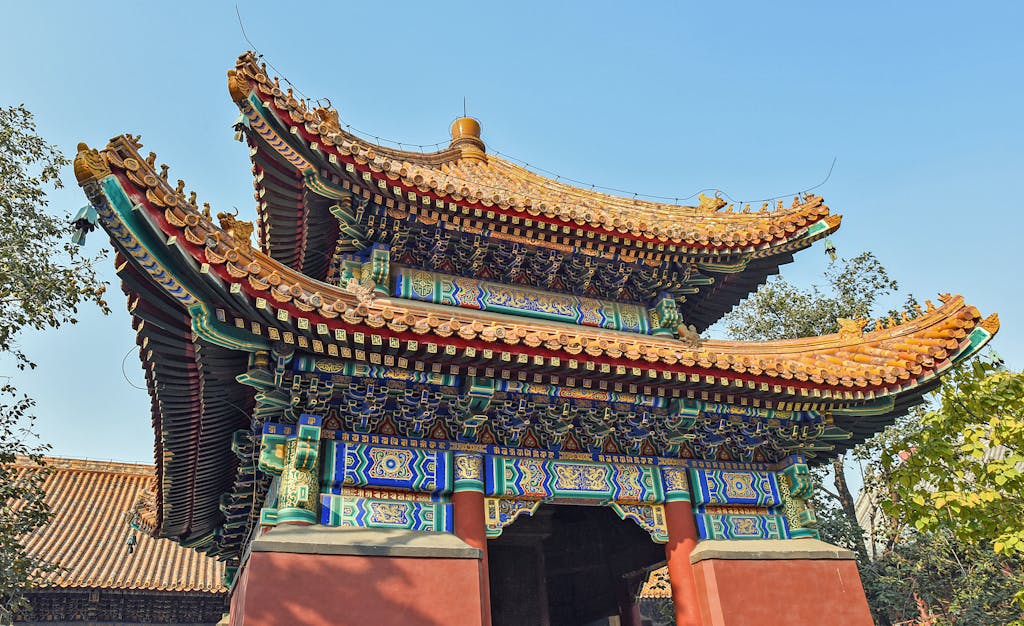
I first visited Lama Temple on the most rewardingly introspective trip of my life that took me through southwest and central China north to the capital of Beijing.
This elegant, lavish Tibetan Buddhist Temple began life as a royal palace, until it was converted in 1700s into a site of worship.
A series of decorative gates reveals increasingly large and luxurious halls. Wanfu Pavilion hosts a remarkable about 60-foot–tall sandalwood idol of Buddha, while Banchan Lou and Jietai Lou halls act as museums, exhibiting Tibetan artefacts.
Ong Bon Pagoda
Ho Chi Minh City, Vietnam
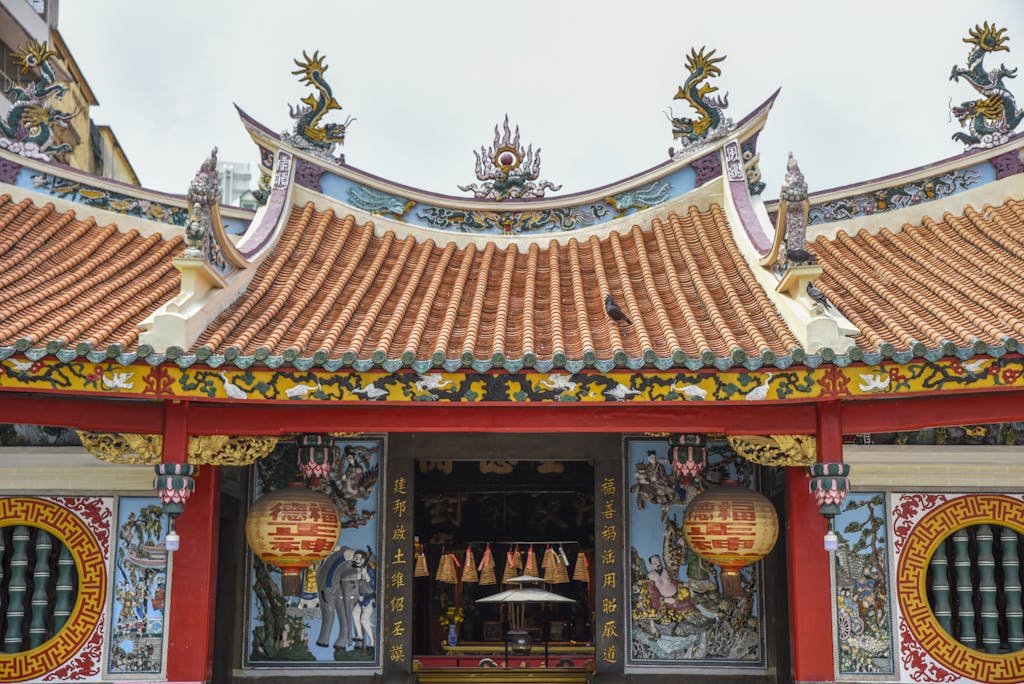
Cholon was one of the first places I experienced culture shock as an adult. After visits to Europe, Phuket, Bangkok, Bali, Singapore and Kuala Lumpur – each touristy or Westernized – I felt galaxies away from home in this district, a throbbing hive of markets, labyrinthine alleys and historic temples including Ong Bon Pagoda.
Cholon, Vietnam’s largest Chinatown, sprouted in the 1700s, and its immigrant community clustered around Ong Bon. Nowadays it’s a key tourist attraction. Ong Bon’s humble façade gives way to an interior rich in detail – gilded accents, intricate woodwork, myth-laden murals, handcrafted lanterns, ancient stone altars and dangling bundles of burning joss sticks.
Wat Kalayanamit Woramahawiharn
Bangkok, Thailand
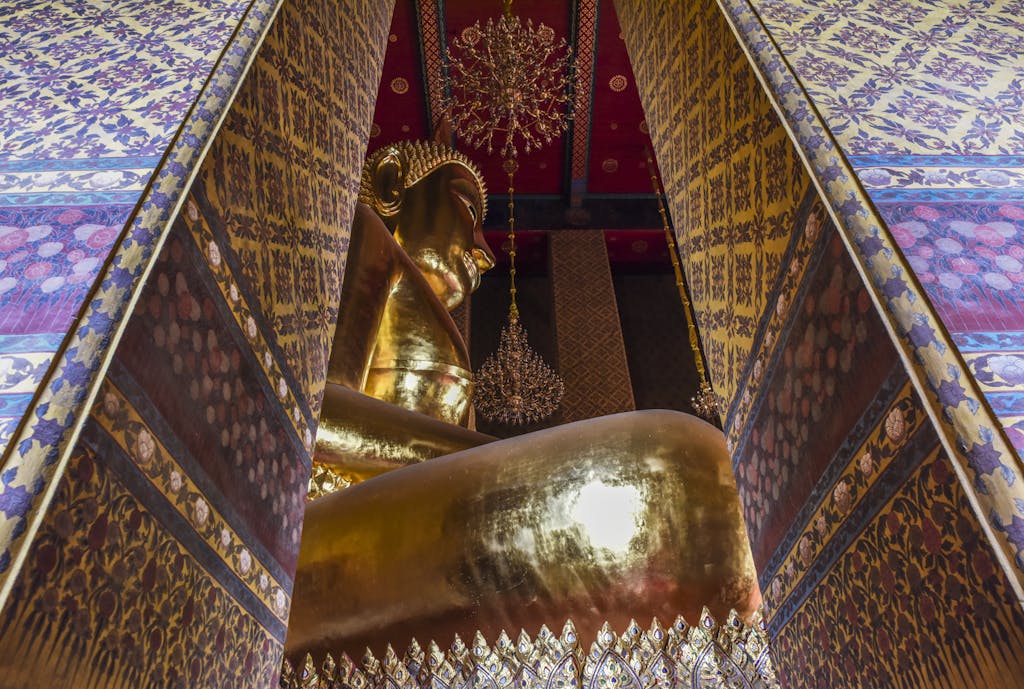
Bangkok brims with famous temples, dozens of which I visited across my many years living in the Thai capital. But it wasn’t until some time later that my Thai wife and I finally explored a low-profile Buddhist wonder with a remarkable back story.
For years she had told me about the history and grandeur of Wat Kalayanamit Woramahawiharn. If anything, her description underplayed its aesthetics. My camera whirred as I tried to capture every mosaicked stupa, vivid mural, metalwork masterpiece and shimmering Buddhist idol within a sprawling complex that overlooks the Chao Phraya River in the district of Thonburi.
All the while, my wife used her phone to read me its engaging origin tale. In 1767, when Thai capital Ayutthaya was razed by Burmese, a local warrior led a resistance and built a new national hub here in Thonburi.
Soon he became King Taksin and ushered Thailand into a prosperous new era. Taksin’s former Royal palace sits alongside Wat Kalayanamit Woramahawiharn. Even its Imperial splendor cannot eclipse that radiant temple.
Buddha Tooth Relic Temple
Singapore
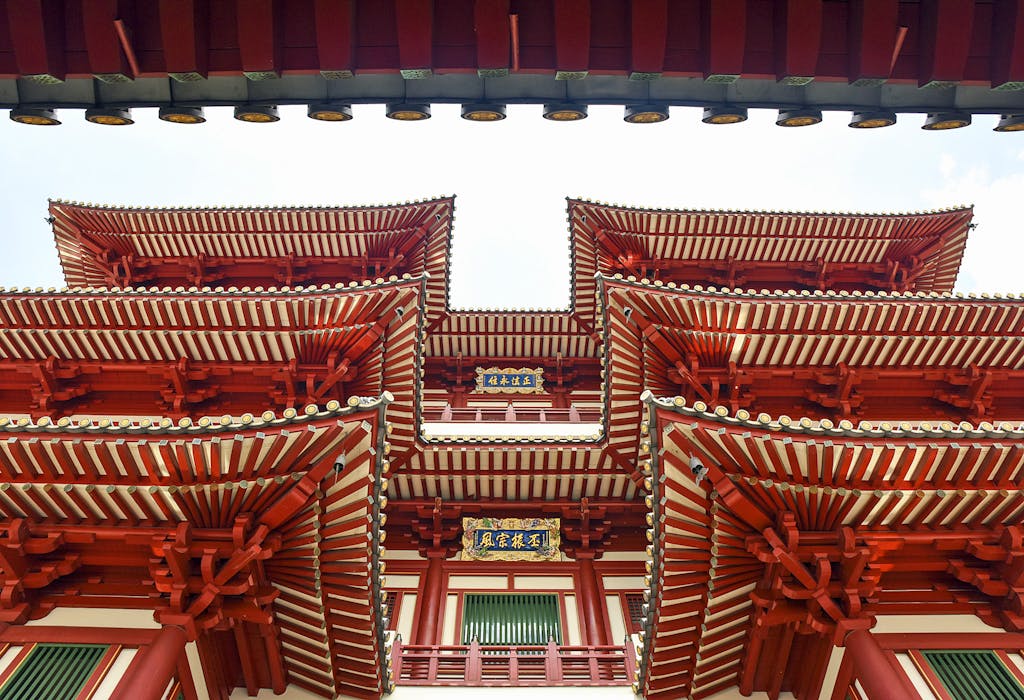
I ignored Buddha Tooth Relic Temple, completed in 2007, on my first few visits to Singapore because I was more accustomed to exploring ancient religious sites that shaped the course of nations.
Yet its lack of historic heft is counterbalanced by this temple’s joyously brash interior. “More is much more” appeared to be its designer’s mantra. They drenched its walls and ceilings in a kaleidoscope of color, ornamentation and Buddhist iconography.
Their lofty aim: to replicate the universe. More specifically, to model this temple on a Mandala, the intricate Buddhist symbol that represents everything we know to exist. Highlights include the temple’s red-and-gold Hundred Dragons prayer hall and the even more ostentatious Universal Wisdom Hall, which contains hundreds of Buddhist statues.
And, of course, there is the reputed tooth of Lord Buddha, encased in a stupa draped in 700 pounds of gold.
Jogyesa Temple
Seoul, South Korea
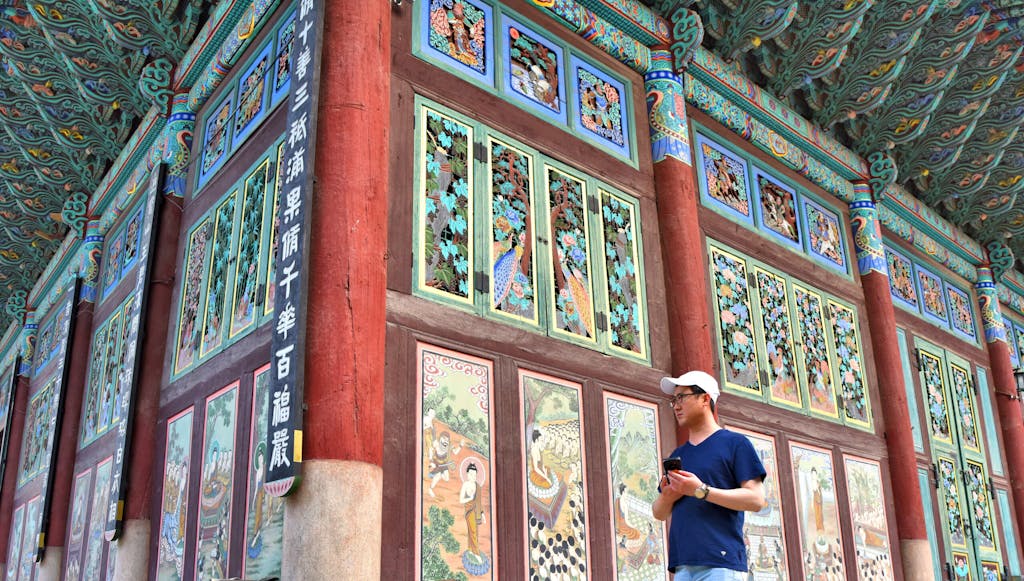
Downtown Seoul’s neatness and modernity verge on feeling clinical But I assured my mum, who was on her first trip to the South Korean capital, that I would reveal its polychromatic brilliance. Across many visits to this huge city, I’ve grown besotted with the rainbow-palette of Jogyesa Temple.
Its façade is cloaked in a gallery of murals that seem to expertly exploit every hue. “Ok, now this is wow,” my mum said. High rises, cafes and convenience stores had just been replaced, in our view, by this 14th century wonder.
Jogyesa, built in 1910, is the most important temple of Korean Buddhism’s Jogye Order. Beyond being routinely occupied by worshippers, it plays a key role in sharing Buddhist beliefs among interested foreigners. At Jogyesa, tourists can attend meditation classes, tea ceremonies, meal rituals or even sleep on site as part of the national Jogye temple stay program.



